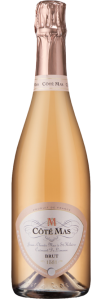What can be more festive when celebrating the holidays than a glass of bubbles? Sparkling wine adds fizz, fun, sophistication, and…well…sparkle to any celebration, and none more than the holidays. When shopping for sparkling wines, many people automatically reach for champagne. (Of course there are those who think all sparkling wine is champagne, but we are confident that our readers know that champagne only comes from the Champagne region of France. All champagne is sparkling wine, but not all sparkling wine is champagne!) Nevertheless, if you opt for the champagne option, you can expect to drop a minimum of about $35 per bottle, and that’s just the entry level.
We’d like to recommend a more budget-friendly option. One that won’t break the bank but does not compromise quality. One in which you could buy two or three bottles for the same price as that single bottle from France. May we present: Cava.
Sparkling wine from other regions and countries have different regional names. Prosecco is from Italy. Cremant is from regions in France outside of Champagne. Cava is from Spain, a country with many amazing wines and wine regions that we have fallen in love with. The majority of Cava is produced in the Penedès wine region in Catalonia, not far from Barcelona. Cava is not new to us; we’ve had many bottles over the years, and even served it at our wedding in 2019. Cava is often our go-to sparkling wine, whether celebrating an event, pairing with a meal, or just sipping on a warm summer evening. We have tried many producers and have never been disappointed. So naturally, when we received an email offering us a sample pack of six bottles of Cava, we readily accepted.
The following wines were provided as media samples for review. All reviews, descriptions, and opinions are our own. We received no additional compensation.
We include the Suggested Retail Price as provided with the samples. As you can see, all of them are well within reach for even the most over-extended Christmas shopper. And we’ve seen many of these bottles in local retail stores for even less than their SRP listed here.
Giró Ribot Paul Cheneau Brut Reserva
Golden color with vigorous, medium sized bubbles. The nose is nutty, with brioche and citrus. On the palate, lemon curd, lemon, pear, and tangerine, with almond and yeast notes. Crisp and lively with bright acidity, and a clean finish of citrus.
SRP: $15.99
Bodegas Faustino Brut Rosé of Garnacha
Salmon rose color. Vigorous tiny bubbles. On the nose, strawberry, raspberry, and just a hint of almond. Flavors of tropical and citrus fruit; pineapple, lemon, with strawberry, raspberry, yeast, brioche, and nutty notes. Bone dry with vibrant acidity and a long, red fruit finish.
SRP: $20.00
Mascaro Pure Cava Reserva Nature
Rich, golden color. Vigorous streams of tiny bubbles that last throughout the glass. Aromas of citrus, yeast, and vanilla. On the palate, green apple, Asian pear, lemon lime, with almond, brioche, and yeast. Crisp acidity with a refreshing finish.
SRP: $15.00
Segura Viudas Cava Brut
Golden color in the glass. Steady streams of medium sized bubbles lead to aromas of pear, apple, and almonds. On the palate, flavors of citrus, pear, peach, almonds, and yeast. Crispy acidity and a fresh finish.
SRP: $12.00
Maset Brut Rosé
Salmon color with vigorous streams of tiny, rushing bubbles. The nose pops with aromas of strawberry, raspberry, citrus, and hibiscus. On the palate, citrus notes of orange and lemon, with strawberry cream, and raspberry. Medium body with a creamy mouthfeel and brisk acidity. Long, crisp finish.
SRP: $10.00
Vins El Cep Marquez de Gelida Gran Reserva Brut 2016

This is our first time tasting a vintage Cava. Most sparkling wines are non-vintage, meaning the grapes may have been harvested in different years and blended. A vintage wine must be made using only grapes harvested in the year designated on the bottle. Vintage sparkling wines are typically only produced in the best harvest years, an indication of higher quality.
Golden color. Vigorous streams of tiny bubbles. The nose is citrus and tropical, with hints of almond. Flavors of lemon lime, grapefruit, pineapple, and orange peel, with nutty notes. Brisk acidity with a long, clean finish.
SRP: $20.00
Remember, like all sparkling wines, Cava isn’t just for holidays and celebrations. As a wallet-friendly option, you can enjoy Cava all year round! So get yourself some Cava and add more sparkle to your life!
Cheers!
- By Kent Reynolds and Robyn Raphael-Reynolds
- Photos by Robyn Raphael-Reynolds

































